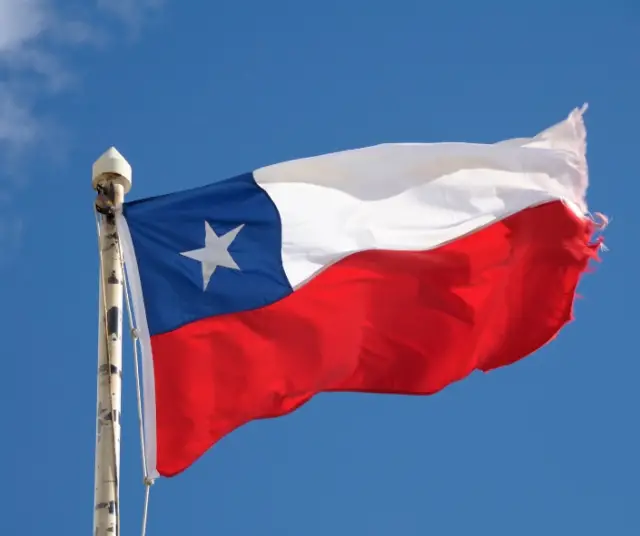A symbol that flies proudly atop this South American country, the Chilean flag is steeped in history and meaning. Its vibrant colors and iconic design enclose a rich narrative that reflects the struggle for independence, national identity, and the values rooted in Chilean culture.
Historical Origins: The Inspiration Behind the Flag
The Chilean flag is much more than a composition of colors; it is a symbol rooted in crucial moments in the nation's history. Its design and adoption are closely linked to the courageous fight for independence that ushered in a new era in Chile.
The genesis of the flag goes back to the days of the independence struggle, when Chile sought to free itself from the Spanish colonial yoke. During the emancipation process led by notable figures such as Bernardo O Higgins and Thomas Cochrane , the need for a unifying symbol became apparent. The flag became a banner that would unite Chileans under the same cause: the search for freedom.
The blue and white chosen for the flag were not mere chromatic whims, but had a deep meaning. These colors, present in the National Cockade used in the Battle of Yungay in 1839, represented the purity of the ideals of independence and unwavering loyalty to the country. In the midst of struggle and adversity, these colors symbolized the hope for a better future and the determination of a people who were willing to sacrifice for their freedom.
The lone star, known as the " O'Higgins' Star ", completed the design of the flag. Located in the upper left box, this star not only represented hope, but also the unity of Chileans in their search for independence. Bernardo O Higgins , a key figure in the fight against Spanish rule, became a symbol of leadership and bravery, and his star was incorporated as a tribute to his contribution in the formation of Chile as an independent republic.
The official adoption of the flag on October 18, 1817 marked a transcendental moment in the history of Chile. It was an act of national affirmation, a bold step toward consolidating a unique identity, and a constant reminder of the values and tenacity that led to independence. Every time the flag flutters in the wind, it honors the memory of those who fought for freedom and celebrates the determination of a country that stood proudly toward a future full of promise.
The Colors and their Meaning
White: This color represents the purity of the ideals that guided the struggle for independence. It also symbolizes the snow of the Andes, a prominent geographic feature in Chile, and the peace that the country was seeking after years of conflict.
El Azul: The blue in the Chilean flag evokes the vastness of the ocean that borders its coasts and the historical importance of the Navy in the fight for independence. In addition, it symbolizes the sky that protects and embraces the nation, a constant reminder of the dreams and aspirations of Chileans.
The Lone Star: The star of the flag, located in the upper left box, embodies the unity and independence of Chile. It is a tribute to Bernardo O Higgins and his contribution in the formation of the country as an independent republic. The O Higgins Star shines with hope and desire for a better future for Chile and its people.
The Evolution of Flag Design
Throughout its history, the Chilean flag has undergone some modifications in its design, but the essential elements have remained intact. One of the notable changes was the variation in the number of star points on the flag. During certain periods, the star had five points, while at other times it had seven.
In 1854, under the presidency of Manuel Montt, the shape of the star with a single point was officially established, which has prevailed until today. This decision was made to avoid confusion with the United States Navy flag, which also had a five-pointed star.
The Chilean flag is more than a patriotic emblem; It is a symbol rooted in Chilean culture and society. It is flown at important events, such as official ceremonies and national celebrations, and is present in government institutions, schools, and public buildings throughout the country. In addition, the flag is an important element in the daily life of Chileans. It becomes a meeting and unity point in moments of celebration and also in periods of challenge. At international sporting events, such as the FIFA World Cup , Chileans proudly wave the flag, showing their support and passion for their country.
